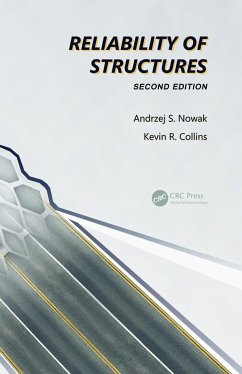This book enables students and practicing engineers to appreciate how to value and handle reliability as an important dimension of structural design. It discusses the concepts of limit states and limit state functions, and presents methodologies for calculating reliability indices and calibrating partial safety factors. It also supplies information on the probability distributions and parameters used to characterize both applied loads and member resistances. This revised and extended second edition contains expanded discussions of U.S. and international codes and Monte Carlo simulation, as well as more examples.
"This is a great book ... easy to teach from; students can readily learn the theory from its beginnings to its practical applications; it is a course topic that will be of great value in understanding structural design during the professional life of the engineer; it is an invaluable tool to guide in the development of national design standards such as the AASHTO bridge design specification; it is logical and it is fun to go back to time and again."
-Theodore V. Galambos, Emeritus Professor, University of Minnesota
"... a must read for any engineer working in the civil engineering structures arena. ... provides the necessary knowledge to give structural engineers the tools they need to make better designs a priori and determine structural failures a posteriori."
-Andrew D. Sorensen, Ph.D., Idaho State University,
"Compared to other textbooks in this area, Reliability of Structures is particularly easy to understand. ... ideal for a first course in this topic, or if the classroom contains undergraduate students who might be otherwise lost in an advanced theoretical presentation. A particular strength is its discussion of design code development and calibration, perhaps the most important application of reliability analysis in structural engineering."
-Christopher Eamon, Wayne State University
-Theodore V. Galambos, Emeritus Professor, University of Minnesota
"... a must read for any engineer working in the civil engineering structures arena. ... provides the necessary knowledge to give structural engineers the tools they need to make better designs a priori and determine structural failures a posteriori."
-Andrew D. Sorensen, Ph.D., Idaho State University,
"Compared to other textbooks in this area, Reliability of Structures is particularly easy to understand. ... ideal for a first course in this topic, or if the classroom contains undergraduate students who might be otherwise lost in an advanced theoretical presentation. A particular strength is its discussion of design code development and calibration, perhaps the most important application of reliability analysis in structural engineering."
-Christopher Eamon, Wayne State University









